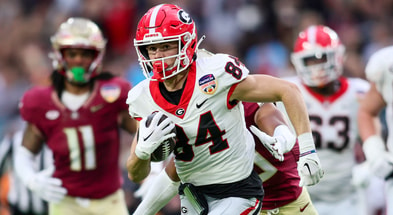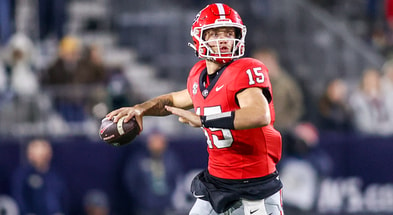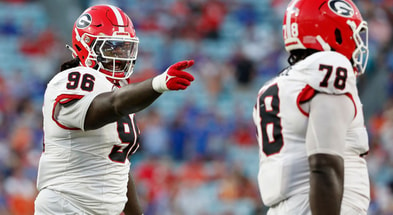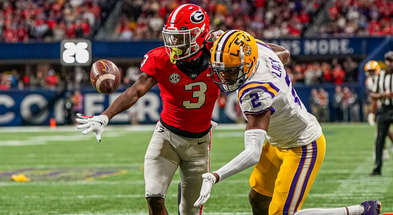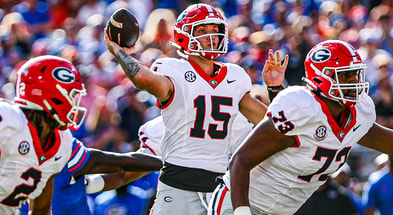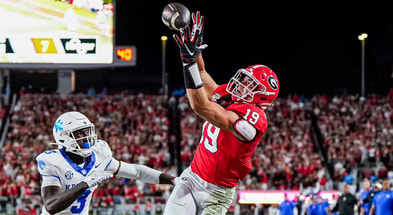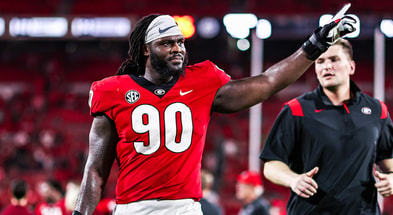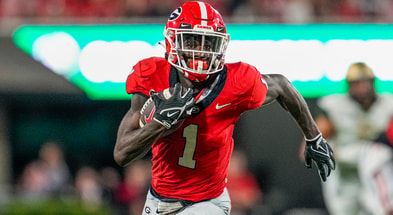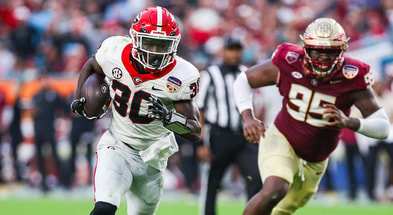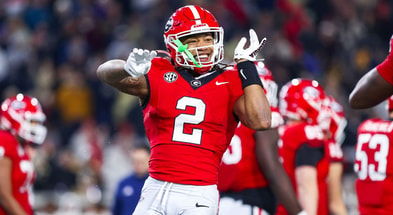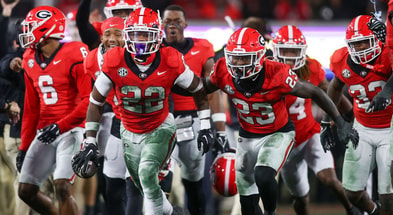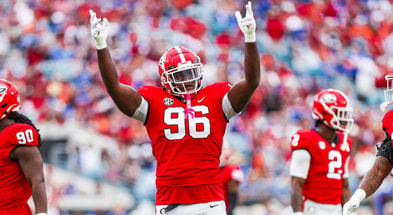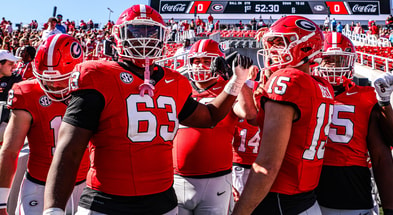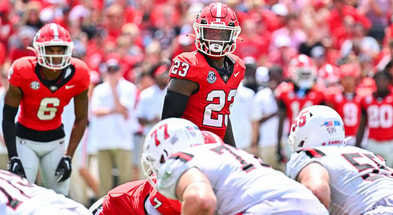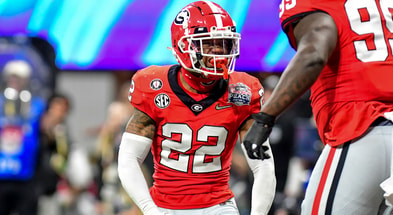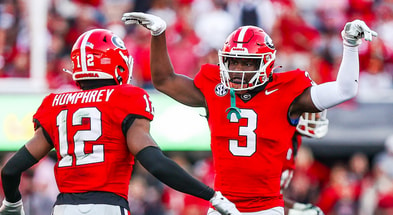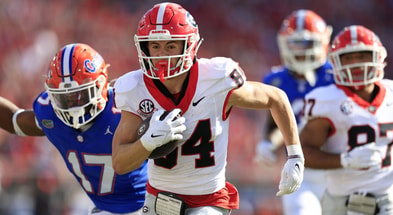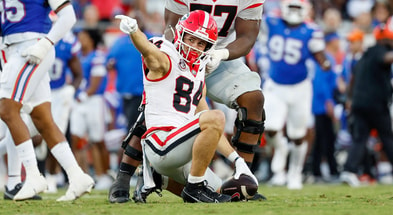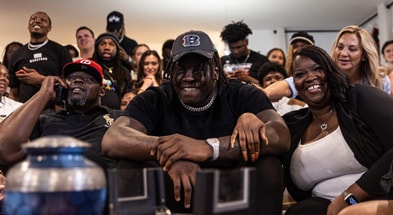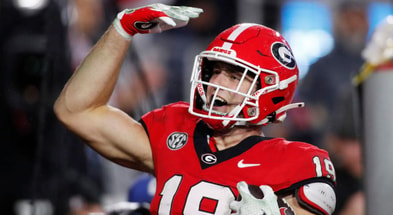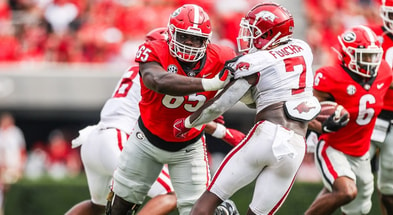Georgia to 'start the process' of facility upgrades for football, track
GREENSBORO, Ga. — Georgia athletics director Josh Brooks announced on Friday that the athletics department is “starting the process” of moving its track and field facilities to South Milledge Avenue. As a result, Georgia will be able to have side-by-side practice fields for the football program.
Once completed, Georgia expects to be able to host SEC Championships and more events on campus throughout the season that they have not been able to in recent years given the lack of space at the current facility. No timeline was set on the project.
The preliminary planning will begin this summer with the first emphasis being on an outdoor facility for track and eventually an indoor facility, first of its kind outside of Atlanta in the state of Georgia. Kirby Smart and the Georgia Football program will be the benefit of the space that gets opened up.
“For us, right now, we’re one of only two programs in the SEC that do not have natural grass football fields side-by-side. We have the indoor facility, which is state of the art and one of the nicest there is. It has turf field, and it is beside our only one grass field,” Smart said. “I’ve talked to Ron Courson for a long time, and the 2023 NFLPA study came out with natural grass versus artificial grass. Injuries are higher on artificial turf than they are on natural grass. One of the big advantages of this is we’re going to have the capability to have two practice fields side-by-side. That’s very important to have a side-by-side field from the perspective of what we do.”
“I’ve had players begging to practice the month of December – we’ve averaged a game or two in December, I guess the SEC Championship and then a couple games in January. They’re begging to practice on grass,” Smart continued. “The wear and tear on turf is really tough. We have not been able to practice once on grass during that time because we don’t have any grass left on our field because of use during the season. They want a grass field, and it’s become a bigger and bigger factor for us as we go along.”
Smart added that the facility changes are also expected to save some money in the long run. With the way things currently are, in order to host camps throughout the summer, Georgia has to bus athletes to facilities outside of their primary footprint. That includes Sanford Stadium and University of Georgia’s intramural fields.
Furthermore, Georgia has to re-sod it’s practice fields every year, an effort that costs $1.36 million. Between the need to re-sod less and cutting out the cost of bussing campers to other locations, projected total savings amount to about $1.5 million a year after the changes are made.
During Smart’s presentation to the board, he also made mention of the efficiency that having side-by-side practice field will allow for at Georgia practice. Instead of having to move from one field to another “horizontally” as he calls it – covering the 100 yards+ each time – the side-by-side “stacked” will cut that distance down significantly. As a result, it’s been on his mind for a while now.
“I don’t know when it was, but I know it’s been something on his mind,” Brooks told reporters. “Coach Smart, one thing I know about him is he’s highly focused on efficiencies in everything he does. As most of you know, he wants to find efficient ways to practice, doesn’t want to waste one second, one minute to practice.”
“There’s a lot of truth to the issues we’ve had with the practice field,” he continued. “One thing that was not mentioned is where that big grass field sits right now, we have a large indoor facility that casts a shadow on it. It puts a lot of strain on our turf facility turf to keep that facility in great shape when half the day it’s getting shade. That has made it a challenge as well. Like he said, there’s data that says it’s better to practice on a grass fields than being on turf. Being able to have two side-by-side grass fields that they can move. You’ve seen practices before. You’ll have 1s and 3s on one field and 2s and 4s on another, to be able to rotate guys back and forth quickly side-by-side makes for a much more efficient practice.”
Smart not only supports the move for the impact it will have on his football program, but also that of track. Several student-athletes cross over between the two sports at the high school and college level, and the facility upgrades would help in the effort to recruit those kids.
“If it can benefit both sports and our student-athletes, we will support it. I’m in complete support of Coach Caryl and the track program. She brings her track athletes to me, and I recruit them. I bring my football athletes to her that run track, and she recruits them. We have a great marriage there and a great friendship. We certainly support what they do.”
“I think we have the best track coach in the country, and when Josh went to hire and interview track coaches, I got the great fortune of sitting in and visiting with each one he would bring by,” Smart continued. “What people don’t acknowledge and realize is that probably twenty or thirty years ago is that there was maybe more overlap between football and basketball or football and baseball, they might share a player, but now, the shared sports are football and track. Since we’ve been at Georgia, we’ve had four or five football players compete in track, so I have no greater interest in all of our sports than I do really in track. That’s the one that directly impacts the football roster most.”
Georgia track is in the midst of its spring outdoor season, qualifying for NCAA Championships at the NCAA East Regional in Jacksonville, Fla. this weekend. Both the men’s and women’s teams led by Caryl Smith Gilbert are in the top 10 of the country and had strong showings during the winter indoor season. The Bulldogs’ football program has won back-to-back National Championships under Smart’s direction and played in a New Year’s Six bowl game each of the last six seasons.
